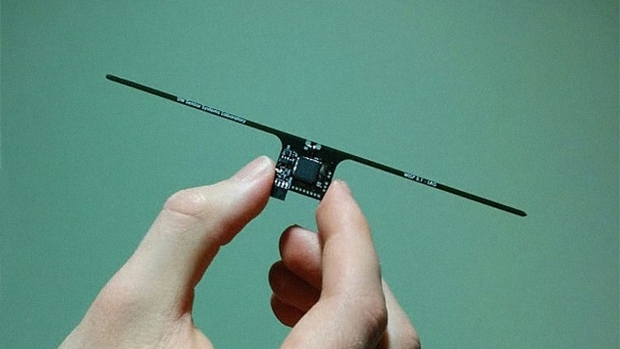Researchers there created the WISP, or Wireless Identification and Sensing Platform which combines sensors and a computing chip that doesn't need a battery or a wired power source to operate. It is powered by radio waves emitted from a standard, off-the-shelf RFID reader and converts them into electricity.
The WISP technology will not power a smartphone or your laptop, in fact the best it can manage is wearables. Aaron Parks, a researcher at the University of Washington Sensor Lab said it had the same clockspeed as a Fitbit with and similar functionality, including embedded accelerometers and temperature sensors.
"It's not going to run a video game, but it can track sensor data, do some minimal processing tasks, and communicate with the outside world," he said. It backscattering incoming radio signals, which Parks says is the equivalent of communicating in morse code with a hand mirror by bouncing light.
Parks says this technique is fast with the same bandwidth as Bluetooth Low Energy mode. WISP can now be reprogrammed wirelessly which means that a wearable can now download a new tracking function, or be updated to fix a bug or glitch, without plugging it into anything.
Parks says there's also ambient battery-free sensors that leech whatever power they can, from passing television waves, cell towers, and so on. But right now, these ambient battery-free computers are very slow, and aren't remotely programmable. WISP is a battery-free computer that's up to 10 times as powerful as an ambient one.
WISP could be used for sensors in concrete structures, inspectors could detect whether or not a building's foundations had been damaged by an earthquake. Parks also says battery-free computers are perfect for implantable devices, to monitor patients' health. There's also interest in WISP-like computers from the agriculture industry, which sees value in it as a way of monitoring thousands of plants at a time.




